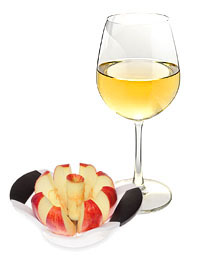 Can you make wine from cut up apples instead of using only juice. I found recipes for all kinds of whole fruit, but not apples. I have made several batches of wine with your products and they have all turned out well. I have a large apple tree and would like to make apple wine, but don’t want to squeeze the juice. I have made chokecherry and blueberry that are wonderful.
Can you make wine from cut up apples instead of using only juice. I found recipes for all kinds of whole fruit, but not apples. I have made several batches of wine with your products and they have all turned out well. I have a large apple tree and would like to make apple wine, but don’t want to squeeze the juice. I have made chokecherry and blueberry that are wonderful.
Name: Jerry S.
State: Nebraska
—–
Hello Jerry,
It is possible to make wine apple without a press and use cut up apples, instead. The issue is that water needs to be added along with the chopped apples to make it a fermentable must. The result is a weaker flavored apple wine than what you would get with straight apple juice. This is not a particularly good thing when you consider that fact that apples do not have that much flavor to begin with as compared to chokecherries and blueberries.
So you have to ask yourself if you would be happy making an apple wine that was a little lighter in body and with a little less flavor. If you’ve got the time and the apples would be going to waste anyway, I say go for it. If you have limited time and you’d eat the apples anyway, then I might reconsider, but of course, it’s up to you.
If you do decide on making apple wine without a press the first thing that should be realized is that if you are making 5 gallons, you will need about 10 gallons of fermenter volume. This is to make room for all the apples and water needed. By the time you remove all the apple solids during the fermentation you will be left with about 5 gallons.
To start out you will need to decide how you are going to chop the apples. I would suggest focusing on making slices of apples instead of cubes. This will allow more flavor to be extracted more easily during the fermentation. An apple coring/slicing knife would not be a bad option for this. You nee to be chopping about 80 pounds of apples to end up with 5 gallons of apple wine.
Dump all the sliced apples in the fermenter(s). Add a sugar/water mixture to fermenters until the apples are covered. This sugar/water mixture is made by dissolving 1-1/2 pounds of sugar to each gallon of water.
You will need to add acid blend to the apple must. For now, add 2 tablespoons to entire 5 gallon batch. If the batch is divided into two fermenters, put 1 tablespoon in each. This is just to get the acidity close enough for a proper, safe fermentation. Once the fermentation is complete and the apple wine has cleared and it is ready to be bottled, you will want to test the acidity with an acid test kit to make a final acidity adjustment.
You will also want to add yeast nutrient at the rate of 1 teaspoon per gallon of actual must. You will also need to add wine tannin — 1 teaspoon over the entire 5 gallon batch is plenty.
The final steps for preparing the apple wine must is to add 1 crushed Campden tablet per each gallon of wine must. If you have 10 gallons of actual must, add 10 tablets. Wait 24 hours for the Campden tablets to do their thing, then add a packet of Red Star Pasteur Champagne Wine Yeast. During this 24 hour period you want to leave the fermenter(s) uncovered, or covered with a very thin towel, at most.
From the point of adding the wine yeast on, the wine making process is like making any other wine. After 5 days or so you will want to remove the apple pulp and then get the wine must under air-lock. You may want to consider using a fermentation bag in the fermenter. This will make pulp removal a breeze. And, you will have a lot of it.
So there it is, all the steps for making apple wine without a press. Just understand that the flavor will be a little weaker, but it will most certainly taste like an apple wine.
Happy Winemaking,
Ed Kraus
———————————————————————————————————
Ed Kraus is a 3rd generation home brewer/winemaker and has been an owner of E. C. Kraus since 1999. He has been helping individuals make better wine and beer for over 25 years.
Category Archives: Q&A
Day 5: My Cider Is Dry. Can I Sweeten it?
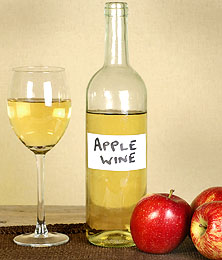 I am into the 5th day of the 2nd fermentation of my apple cider. I took a sample of the cider yesterday and found it to be very dry and cloudy. I have two questions. 1) Can I add sugar at this point to sweeten or will this just increase the alcohol content? 2) Can I add pectin at this time or is that only mixed with the must? Or is there a better fining additive? Thank you.
I am into the 5th day of the 2nd fermentation of my apple cider. I took a sample of the cider yesterday and found it to be very dry and cloudy. I have two questions. 1) Can I add sugar at this point to sweeten or will this just increase the alcohol content? 2) Can I add pectin at this time or is that only mixed with the must? Or is there a better fining additive? Thank you.
Name: Chuck F.
State: NY
—–
Hello Chuck,
You are correct in thinking that more sugar will only contribute to more alcohol. If you want to sweeten the wine you want to do it right before bottling, not day 5 of the fermentation.
Once the cider has come to a point that it is ready to bottle, add sugar to taste. The sugar should be in a simple syrup form made by heating up equal parts of sugar and water in a sauce pan. Add the sugar syrup to get the sweetness you like.
You will also need to add potassium sorbate at the same time to keep the fermentation from restarting. Potassium sorbate will keep a wine that is still and clear from starting a renewed fermentation. You may want to read more on sweetening your wine before actually doing it.
Most of the cloudy stuff you are seeing in the wine at this stage is yeast. A little packet of wine yeast will typically grow to 100 to 150 times what you put in. It is finer than flour, so it does take time for it to settle out.
It is completely normal for the cider to be cloudy at this stage. Once the fermentation stops, you will slowly see the cider begin to clear. It may take a week or two to completely clear, but it will clear. You can add bentonite to help speed up the clearing process, but do not add it before the fermentation has completely finished.
Now for your second question about adding pectic enzyme. If you have not added pectic enzyme to the cider, you should go ahead and do it now. We recommend adding double the recommended dosage. This is because you are adding it after the fermentation has started. You need more enzymatic power to get it up to speed.
Pectic enzyme does two things: 1) it helps to break down the pulp so that you can get more juice and flavor from it; 2) it breaks down pectin that can cause cloudy haze in the cider. You can read more about using pectic enzyme, as well.
I hope this helps you out. Just be a little patient. Give the wine some time and things should come together like they should.
Happy Winemaking,
Ed Kraus
———————————————————————————————————
Ed Kraus is a 3rd generation home brewer/winemaker and has been an owner of E. C. Kraus since 1999. He has been helping individuals make better wine and beer for over 25 years.
Reusing Box Wine Container Bags For Homemade Wine
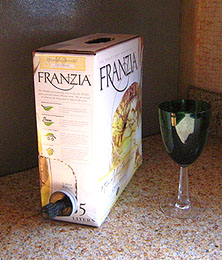 Is it ok to use boxed wine containers for my homemade wine, after removing spigot, and using Camden tabs to clean container? Spigot is easily removed and replaced. I make 15 gal every run, bottles get expensive. Thanks
Is it ok to use boxed wine containers for my homemade wine, after removing spigot, and using Camden tabs to clean container? Spigot is easily removed and replaced. I make 15 gal every run, bottles get expensive. Thanks
Name: Dale
State: TN
—–
Hello Dale,
No one here has any specific experience with reusing box wine container bags for homemade wine. I haven’t heard of any of our customer doing this either, so I don’t have any direct experience with using them. But knowing what I do know about wine and storage, I see know reason why you couldn’t reuse the bag-in-a-box container.
The biggest concern is sanitation. If remnants of the original wine has been sitting in the bag for some time, weeks maybe, and has become dried, it could be hard to get the box wine container bag completely sanitized. But on the other hand, if you rinse the original wine out as soon as you empty the box bag, it should be fairly easy to sanitize.
As far as sanitizers go, I would suggest using CleanPro SDH in the bag. Realize that the only way you are going to get it completely sanitize is to fill the box bag completely up to maximum capacity. The sanitizing solution needs to come in contact with all surfaces. This will not happen unless the bag is fully expanded and wrinkles eliminated.
Also, you will want to add sulfites to the wine just before putting the homemade wine in the box wine bag. This can be in the form of either: Campden tablets, potassium metabisulfite or sodium metabisulfite. It doesn’t’ matter. This suggestion is no different than if you where putting your homemade wine up in wine bottles.
When actually sealing the wine bag shut, you will want to eliminate any air pockets in the wine bag. Any air in the bag will only contribute to oxidation.
My personal thought is that reusing box wine containers bags for homemade wine does have potential, but there may be some problems to look out for as well, particularly when it comes to long-term storage and aging. Will the wine age well? Will the bag’s plastic allow too much air to permeate and facilitate oxidation?
I would like to also point out that there is a similar product that can be used for this purpose. We have been selling Reliance containers for over 30 years for both fermenting and dispensing. Like the bag-in-a-box containers, they collapse as the wine is decanted.
Happy Winemaking,
Ed Kraus
———————————————————————————————————
Ed Kraus is a 3rd generation home brewer/winemaker and has been an owner of E. C. Kraus since 1999. He has been helping individuals make better wine and beer for over 25 years.
Using Bentonite In Winemaking
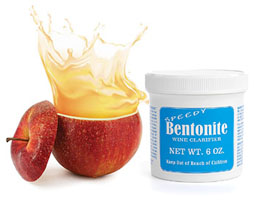 The wine kits I use come with Bentonite. I am preparing to start my first batch of hard cider, from scratch. Should I use Bentonite in that also?
The wine kits I use come with Bentonite. I am preparing to start my first batch of hard cider, from scratch. Should I use Bentonite in that also?
Name: Betsy L
State: WI
—–
Hello Betsy,
Thanks for the great question about using bentonite! Before I answer your question I would like to go over some things about how bentonite is used in winemaking.
The reason bentonite is used in the wine with the wine ingredient kits is so that the wine will clear up more quickly and be ready to bottle in the 28 days, as these kits promise. The bentonite is put in the wine at the beginning of fermentation.
This is somewhat unusual in winemaking since fining agents are typically added after the fermentation, not before. But you can get away with it if you know the dosage to add and have bench-tested this amount such as the wine ingredient kit producers have done.
The amount of bentonite used in a wine is critical when added before the fermentation. Use too much and you will drag out all the wine yeast and stop the fermentation; don’t use enough and there’s no early clearing of the wine/cider.
To answer your question, yes, go ahead and put bentonite in the wine, but do not use it before the fermentation, but rather, after the fermentation has completed. The dosage listed on the container will be intended for use at this time. It is a much larger dose than what would be used before the fermentation.
Also realize that if you didn’t use any bentonite in the wine at all, it would more than likely clear up on its own just fine anyway. Just not as quickly. Bentonite is generally used in wine right after to the fermentation to speed up the process and make it more stable sooner, not necessarily to make the wine better.
Thanks again for such a great question about bentonite and its use in winemaking. We have more information on using bentonite before the fermentation if you are interested.
Happy Winemaking,
Ed Kraus
———————————————————————————————————
Ed Kraus is a 3rd generation home brewer/winemaker and has been an owner of E. C. Kraus since 1999. He has been helping individuals make better wine and beer for over 25 years.
What's The Rules For Topping Up Wine
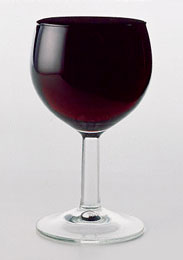 When making my wine I have never topped up on the first or second racking. I have had great results but a few people tell me I need to be topping up the wine. I could see topping up the wine if I was batch aging, but for the 4 weeks I hold and rack after primary fermentation I am no so sure. It should be mentioned I am usually only down much less than a liter. Your thoughts?
When making my wine I have never topped up on the first or second racking. I have had great results but a few people tell me I need to be topping up the wine. I could see topping up the wine if I was batch aging, but for the 4 weeks I hold and rack after primary fermentation I am no so sure. It should be mentioned I am usually only down much less than a liter. Your thoughts?
Name: Mike in B’ville
State: NY
—–
Hello MIke,
If you are making wine from a box wine ingredient kit topping up the wine is not recommend. Partially for the reasons you gave about it not being that long of time, but also because these kit manufacturers produce the wine in such a way that they do not oxidize very easily. This is just one of the many advantages of using a wine ingredient kit.
However, if you are making a wine from fresh fruit or fresh juice the story is a little different.
First off, you don’t need to be topping up the wine while the fermentation is occurring. This is because the CO2 gas (carbon dioxide) coming off the fermentation keeps the air away and protects it from oxidation. The CO2 is slightly heavier than air, so it wants to create a protective blanket across the surface of the wine.
Even when the fermentation has completely stopped, as long as you have not taken the air-lock off the fermenter, there is no reason to be topping up the wine. The CO2 gasses from the fermentation are still trapped in the head-space of the fermenter. No air is in the head-space.
But the moment you remove the air-lock or take the lid off the fermenter, all the rules change. You are then in a situation where not only is topping up important but vital to the color and flavor of the wine.
What is topping up a wine?
What is meant by topping up a wine is increasing the volume of the wine so as to reduce the amount of head-space in the vessel. To be more specific, the exact goal here is to eliminate as much surface contact between the wine and the air. You want this contact to be as minimal as possible.
In the case of a carboy, when you increase the volume of the wine you push the surface of the wine from the shoulders into the neck. It goes from maybe a square foot of surface contact area to maybe 2 square inches.
Hope this info helps you out,
Ed Kraus
———————————————————————————————————
Ed Kraus is a 3rd generation home brewer/winemaker and has been an owner of E. C. Kraus since 1999. He has been helping individuals make better wine and beer for over 25 years.
Adding Campden Tablets To Cider
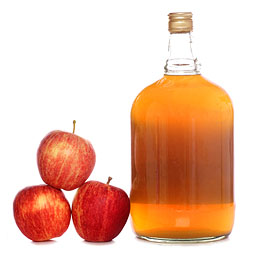 I’ve read that you have to add a campden tablet to cider 24 hours before you add the yeast…..I’ve not done this and my cider is now fermenting away. Can I add the correct amount of tablets per gallon once I have strained the sediment off – 2/3 times – 24 hours before I bottle the cider…….am worried that the cider will not be safe to drink!
I’ve read that you have to add a campden tablet to cider 24 hours before you add the yeast…..I’ve not done this and my cider is now fermenting away. Can I add the correct amount of tablets per gallon once I have strained the sediment off – 2/3 times – 24 hours before I bottle the cider…….am worried that the cider will not be safe to drink!
Name: Fiona
State: Nova Scotia
—–
Hello Fiona,
You didn’t add Campden tablets to the cider, and that’s okay. Since your fermentation is active, the cider should be fine. The fact that it is active means that the cider yeast has successfully multiplied into a full colony and will be able to protect the cider from the growth of any mold or bacteria that may be in the juice.
The reason Campden tablets are called for in a cider recipe before adding yeast is to destroy any trace amounts of mold spores or bacteria that may be in the juice. Any small amounts can multiply into a full-blown spoilage if the yeast doesn’t happen to grow and take over the juice first.
In your case the yeast did take over, so spoilage did not have any chance to take place — no harm, no foul.
I would like to point out that when you do add Campden tablets to cider before a fermentation, it is important that you wait 24 hours before adding the yeast. And, it is important that the cider not be sealed up during the 24 hours. Just cover it with a thin towel. This is because the gas from the Campden tablets need to escape from the cider before you add the yeast, otherwise the Campden tablets can destroy some of the yeast in the cider, as well.
This is not the only time you add Campden tablets to the cider, either. You should add them again after the fermentation has completed (the should be verified with a hydrometer). And, you should also add Campden tablets to the cider, again, right before bottling.
Also, please realize that if you plan to back sweeten the cider, the Campden tablets will not eliminate a chance of a re-fermentation in the bottle. For this you will need to also add potassium sorbate along with the Campden tablets.
Happy Winemaking,
Ed Kraus
———————————————————————————————————–
Ed Kraus is a 3rd generation home brewer/winemaker and has been an owner of E. C. Kraus since 1999. He has been helping individuals make better wine and beer for over 25 years.
Making Wine From Grapes At Home
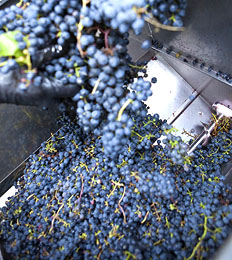 Can you furnish a grape wine recipe for 5 gallons of Cynthiana grape wine?
Can you furnish a grape wine recipe for 5 gallons of Cynthiana grape wine?
Name: Dennis T.
State: GA
Hello Dennis,
Making wine from grapes is more of a process than a recipe. This is true regardless if you are a winery or just an individual making grape wine at home. It’s different than making wine from a fruits like blueberries or peaches where you can follow a wine recipe to make the wine.
The primary reason for this difference is that when you are making wine from grapes you are using 100% grape juice. No water is being add to the grape juice. This means that a change in sweetness or acidity from one season to the next affects what’s needed in the grape wine recipe, dramatically.
This is not so much the case when making a batch of raspberry wine, for example. The actual raspberry juice may only represent about a fifth of the liquid that’s in the wine. The rest is water, so the amount of ingredients such as Acid Blend, sugar, etc. are somewhat predictable, regardless of how sweet or acidic the raspberries are. These amounts can be packaged up neatly and put into a wine recipe.
So what does this mean for the person making wine from grapes at home? It means that they will need to test the grapes they have at hand to know how much of the wine ingredients to add.
Some wine ingredients will be constant regardless of the grapes. This applies to yeast nutrient, pectic enzyme, potassium metabisulfite and wine yeast. With each of these items simply follow the amounts called for on the containers they came in.
But with sugar, Acid Blend and wine tannin, the amounts will vary based on tests you will give the grape juice. For sugar you will take a hydrometer reading; for Acid Blend you will take an acid test reading; and for tannin you will take a litmus reading with pH papers.
Dennis, we have a great article on our website that covers making wine with grapes. This info will help you to add the correct wine ingredients in the correct amounts so that you can come up with the best Cynthiana grape wine possible.
Happy Winemaking,
Ed Kraus
———————————————————————————————————–
Ed Kraus is a 3rd generation home brewer/winemaker and has been an owner of E. C. Kraus since 1999. He has been helping individuals make better wine and beer for over 25 years.
Making Wine With Eating Grapes
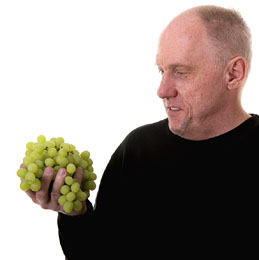 Our local supermarket has grapes on sale, with and without seeds. Can I crush these to make wine?
Our local supermarket has grapes on sale, with and without seeds. Can I crush these to make wine?
Name: John
State: New York
Hello John,
Yes, you can make wine with eating grapes, but realize they are not intended for making wine.
They have been bred for eating. This means that the sweetness and acidity are both lower than what you’d expect from an actual wine grape. The flesh is thicker and firmer with an eating grape than that of a wine making grape. People like the grape to snap when they bite into it. This firmness also makes the eating grape better equipped for transporting across the country.
None of this helps the winemaker. Firmer means more effort is need to crush and/or press the grape. Firmer also means that there will be less juice per pound of grape with an eating grape than with a wine grape. All these things mean making wine with eating grapes is more work.
Also, the breeding has also been done at the expense of the grapes inherent flavor. While the sweetness, acidity and firmness of the eating grape are optimal for popping in your mouth, if you ferment the sweetness away, the flavor that is left behind is not all that flavorful. Not much consideration is given to this aspect of the eating grape when being bred eating.
Having said this, I don’t want to discourage you from giving it a try. Making wine with eating grapes grapes is fine if you want to have some fun learning about the wine making process. This process is exactly the same either way. It’s just that you should not expect too much as a final result. The wine will be very drinkable, but lack flavor and character.
You can find more info on this matter in the blog post: Table Grapes Vs. Wine Grapes. You can also find a Thompson grape wine recipe on our website. Thompson grapes are a classic eating grape, so this wine recipe should work fine for any eating grape you come across.
Happy Winemaking,
Ed Kraus
———————————————————————————————————–
Ed Kraus is a 3rd generation home brewer/winemaker and has been an owner of E. C. Kraus since 1999. He has been helping individuals make better wine and beer for over 25 years.
Off-Odors Coming From My Wine!
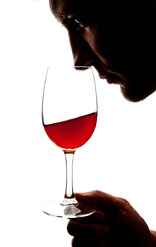 I have been making homemade wine now for about 7 years with great success. My wine making has always been from fresh juice or kits. My question is…whenever I open a bottle of wine, no matter its age, it initially has a somewhat homemade odor (tough to describe and not necessarily offensive) that I do not notice in commercial wines. I find that after uncorking a bottle, it almost always smells and tastes better on day two. This seems to ring true no matter what type of wine juice is used. I am assuming something is precipitating out of the wine after it is uncorked, but don’t understand what or why. Can you shed any light on what is happening here? Name: Bob D.
I have been making homemade wine now for about 7 years with great success. My wine making has always been from fresh juice or kits. My question is…whenever I open a bottle of wine, no matter its age, it initially has a somewhat homemade odor (tough to describe and not necessarily offensive) that I do not notice in commercial wines. I find that after uncorking a bottle, it almost always smells and tastes better on day two. This seems to ring true no matter what type of wine juice is used. I am assuming something is precipitating out of the wine after it is uncorked, but don’t understand what or why. Can you shed any light on what is happening here? Name: Bob D.State: Massachusetts
- Squeezing a wet cork over the wine bottle when bottling and allowing the liquid to drip into the wine.
- Too much sulfite such as sodium metabisulfite or Campden tablets being used throughout the wine making process.
- Bottling the wine to soon and trapping off-gases from the wine yeasts’ fermentation.
- Fermenting at too warm of a temperature. 78°F and above can be a problem.
———————————————————————————————————
Ed Kraus is a 3rd generation home brewer/winemaker and has been an owner of E. C. Kraus since 1999. He has been helping individuals make better wine and beer for over 25 years.
Will My Beer With Extended Fermentation Time Still Carbonate?
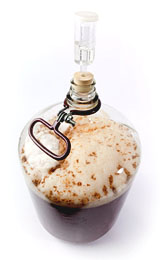 I brewed a decent Scottish ale. Racked it after primary fermentation of about 7 days or so. But just haven’t made time to bottle it. It’s been in the secondary about 5 or 6 weeks. The air lock suggests it’s still fermenting. I pulled out a glass. It’s of course flat, but the flavors are good. If I bottled as normal with priming sugar, will there be enough living yeast to carbonate this late in the process. What should I do to ensure my finished product doesn’t seem like I let it sit too long?
I brewed a decent Scottish ale. Racked it after primary fermentation of about 7 days or so. But just haven’t made time to bottle it. It’s been in the secondary about 5 or 6 weeks. The air lock suggests it’s still fermenting. I pulled out a glass. It’s of course flat, but the flavors are good. If I bottled as normal with priming sugar, will there be enough living yeast to carbonate this late in the process. What should I do to ensure my finished product doesn’t seem like I let it sit too long?
Name: Justin V.
State: PA
—–
Hi Justin,
Thanks for your question!
Your Scottish ale is almost definitely done fermenting and if it tastes good, it should be perfectly fine for bottling as you would normally. Five to six weeks is a little longer than necessary for a typical secondary fermentation, but it’s not an excessive amount of time or cause for alarm. In fact, some beer styles require extended time in the fermenter to condition or to ferment completely.
As long as you haven’t filtered your beer, there should still be enough beer yeast in suspension for them to consume the priming sugar and carbonate your beer. Even so, in racking from secondary to your bottling bucket, this will stir up a little beer yeast, so I wouldn’t worry about having enough yeast to do the job. You may want to read more in this post about carbonating your homebrew.
The only thing that could possibly cause issues for you is yeast death. When yeast dies it can rupture, resulting in what is called yeast autolysis. The dead cells can leech some unpleasant off-flavors into your brew. If you have the off-flavors from yeast autolysis you will know it. It would have to be a pretty extreme scenario (such as in John Palmer’s example) to cause any problems, and since you racked to secondary, you already left most of the spent yeast in the primary fermenter. Chances are that if you kept the fermentation sealed and at a reasonable temperature, and if the beer tastes fine at this point, your beer will be ok.
In the event that you do pick up some off-flavors when you’re eventually ready to drink your brew, time is your best friend. Leave the bottles alone for a month or longer and you may well discover that unpleasant flavors balance out over time. I’m often surprised by how a homebrew can develop in the bottle over the course of several months.
So that’s the long answer to your question! The short answer is from Charlie Papazian: “Relax, don’t worry, have a homebrew!”
Til next time…Cheers!
——————————————————————————————————-
David Ackley is a beer writer, brewer, and self-described “craft beer crusader.” He holds a General Certificate in Brewing from the Institute of Brewing and Distilling and is founder of the Local Beer Blog.
